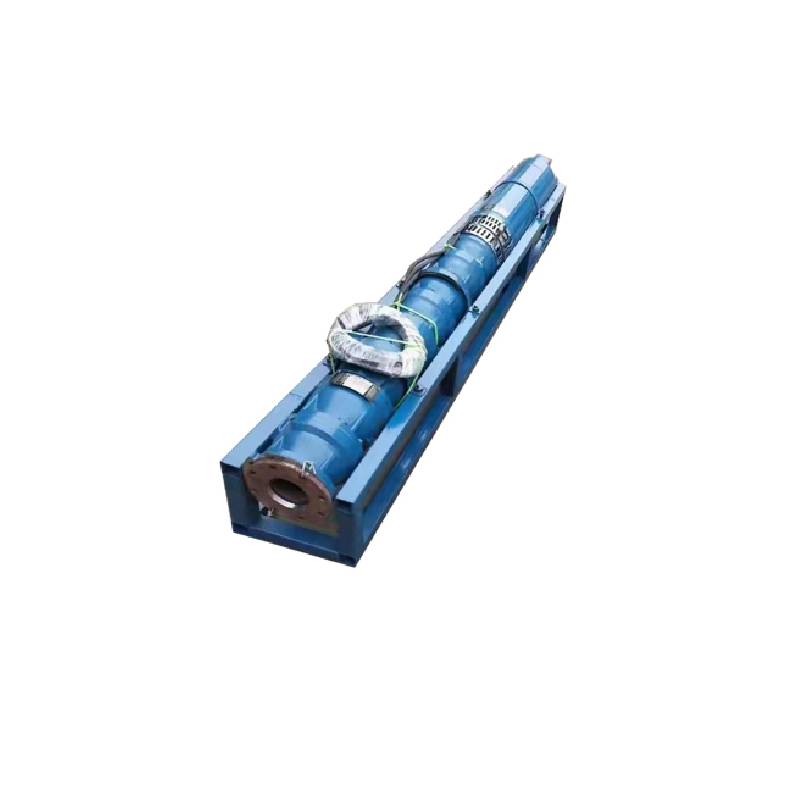Jul . 27, 2024 11:28 Back to list
Installation Guide for Submersible Pumps and Their Essential Fittings and Accessories for Optimal Performance
Understanding Submersible Pump Fittings Essential Components for Efficient Pump Operations
Submersible pumps play a crucial role in various applications, including water extraction, wastewater management, and industrial processes. Central to the effective functioning of these pumps is the importance of proper fittings, which connect the pump to the piping system. In this article, we will explore the different types of submersible pump fittings, their significance, and considerations for selection and maintenance.
Types of Submersible Pump Fittings
Submersible pump fittings can be broadly categorized into two main groups inlet fittings and discharge fittings.
1. Inlet Fittings These fittings are designed to facilitate the entry of fluid into the pump. They are typically located at the base of the pump and must be designed to minimize the risk of clogging. Common types of inlet fittings include
- Strainers Used to filter out larger debris from the water, preventing damage to the pump. - Adapters These connect the pump's inlet to the piping system, ensuring a secure fit that allows for easy fluid flow.
2. Discharge Fittings Discharge fittings are crucial for directing the pumped fluid away from the pump. These fittings help maintain optimal pressure and prevent leakage. Common types of discharge fittings include
- Flanges These provide a stable connection between the pump and the piping system and are available in various sizes and pressure ratings. - Connectors Used to join different sections of piping, connectors can provide flexibility in a pumping system, allowing for changes in direction or elevation.
submersible pump fitting

Importance of Proper Fitting Selection
Choosing the right fittings for submersible pumps is essential for ensuring efficient operation and longevity. Each fitting must be compatible with the pump's size, operating pressure, and the type of fluid being pumped. For instance, using the wrong size of fittings can result in cavitation, which can severely damage the pump. Moreover, the material of the fittings must also be considered, as it should be resistant to corrosion, especially in scenarios involving abrasive or chemical-laden fluids.
Installation and Maintenance Considerations
Proper installation and ongoing maintenance of submersible pump fittings are vital for ensuring a long-lasting and efficient pumping system. During installation, it is important to ensure that all fittings are securely tightened to avoid leaks and maintain system integrity.
Regular maintenance checks should focus on the condition of the fittings, looking for signs of wear, rust, or damage. Any faulty fittings should be replaced promptly to prevent further damage to the pump or the surrounding infrastructure.
Conclusion
In summary, submersible pump fittings are integral to the effective operation of pumping systems. By selecting the appropriate inlet and discharge fittings, and ensuring proper installation and maintenance, users can significantly enhance the performance and durability of submersible pumps. As the demand for efficient pumping solutions continues to grow across various sectors, understanding the role of pump fittings becomes increasingly critical for engineers, operators, and facility managers alike. Whether for residential applications or large-scale industrial projects, investing time and resources into the right fittings can lead to significant long-term benefits.
-
Submersible Water Pump: The Efficient 'Power Pioneer' of the Underwater World
NewsJul.01,2025
-
Submersible Pond Pump: The Hidden Guardian of Water Landscape Ecology
NewsJul.01,2025
-
Stainless Well Pump: A Reliable and Durable Pumping Main Force
NewsJul.01,2025
-
Stainless Steel Submersible Pump: An Efficient and Versatile Tool for Underwater Operations
NewsJul.01,2025
-
Deep Well Submersible Pump: An Efficient 'Sucker' of Groundwater Sources
NewsJul.01,2025
-
Deep Water Well Pump: An Efficient 'Sucker' of Groundwater Sources
NewsJul.01,2025
-
 Submersible Water Pump: The Efficient 'Power Pioneer' of the Underwater WorldIn the field of hydraulic equipment, the Submersible Water Pump has become the core equipment for underwater operations and water resource transportation due to its unique design and excellent performance.Detail
Submersible Water Pump: The Efficient 'Power Pioneer' of the Underwater WorldIn the field of hydraulic equipment, the Submersible Water Pump has become the core equipment for underwater operations and water resource transportation due to its unique design and excellent performance.Detail -
 Submersible Pond Pump: The Hidden Guardian of Water Landscape EcologyIn courtyard landscapes, ecological ponds, and even small-scale water conservancy projects, there is a silent yet indispensable equipment - the Submersible Pond Pump.Detail
Submersible Pond Pump: The Hidden Guardian of Water Landscape EcologyIn courtyard landscapes, ecological ponds, and even small-scale water conservancy projects, there is a silent yet indispensable equipment - the Submersible Pond Pump.Detail -
 Stainless Well Pump: A Reliable and Durable Pumping Main ForceIn the field of water resource transportation, Stainless Well Pump has become the core equipment for various pumping scenarios with its excellent performance and reliable quality.Detail
Stainless Well Pump: A Reliable and Durable Pumping Main ForceIn the field of water resource transportation, Stainless Well Pump has become the core equipment for various pumping scenarios with its excellent performance and reliable quality.Detail
